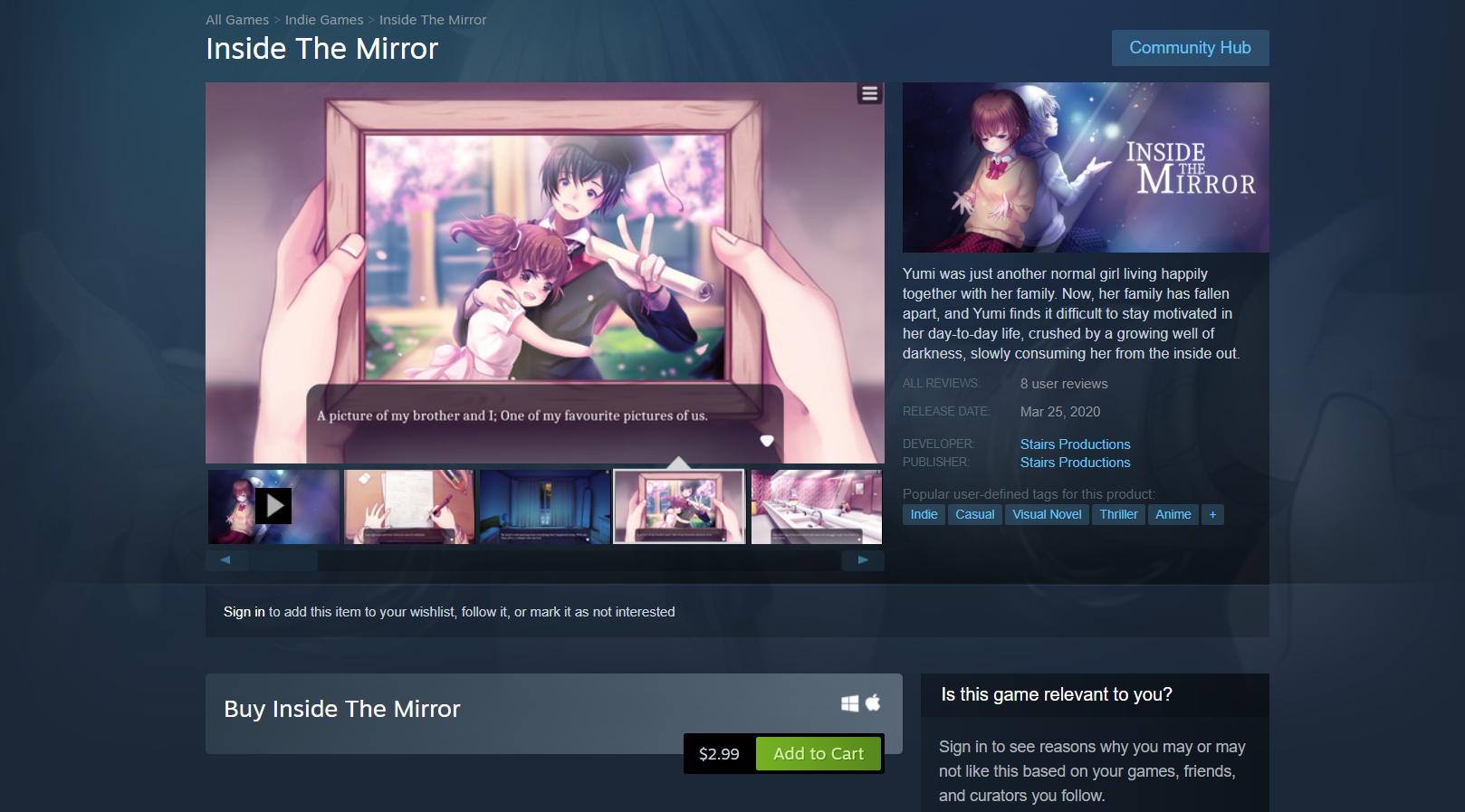
Technical Game Designer, UX Designer - Inside The Mirror
Starting a Company Is Tough
Stairs Productions was founded by myself and a couple close friends to give our projects, passion, and ideas a platform to stand on in the world. Our founding goal is to produce games from start to finish that impact our players positively, no matter how many we reach.
Our flagship game Inside The Mirror was our attempt to reach out to those suffering from mental illness, as well as their friends and family, and break down the walls built by stigma. Everyone on the team had experience with mental illness in one way or another, which made this project very personal. This of course had its good, bad, and ugly sides which I’ll go through below.
My Role(s)
A little bit of everything…
The blessing and curse of working at a tiny indie studio is that you get to dig your hands into a little bit of everything. Below is a list of my roles and responsibilities on Inside the Mirror, but I’m probably missing something in the myriad of shoes that I filled.
Technical / Design
Designed the main user experience by creating content requests for the various content teams (audio/art) after evaluating the narrative and establishing a desired aesthetic for story bits
Iterated on UX design and story flow through closed playtest feedback
Implemented various content (sprites, background art, music tracks, sound effects) into the Unity narrative plugin: Fungus
Scripted scene transitions, effects timing
Logic scripting for the game: save game logic, gating, pathways
Troubleshooted said implemented logic
General C# scripting / debugging
Managed source control depot
Led the publishing effort on Steam, worked with the steamworks publishing tool to finalize builds and launch the game
Collaboration
Established art content pipeline (request format, file expectations, integration process, general implementation)
Established music / sfx content pipeline (request, file expectations, integration process, general implementation)
Worked / synced frequently with artists / musicians to go over expectations, mood words for requested content, fielded design questions, etc..
Worked / synced frequently with the narrative to ensure the creative vision was in sync with the content being requested from myself
Worked frequently with the programming team to ensure technical asks from the design team were feasible / in scope / etc…
Led and organized the bug hunt squad while bringing the title from beta to final


